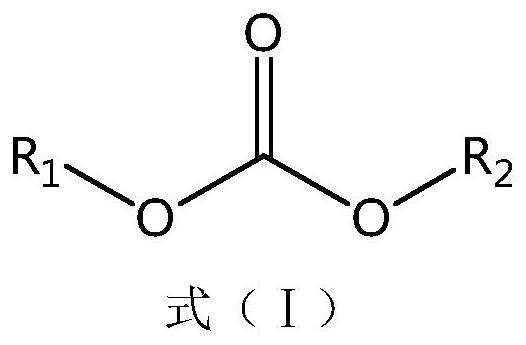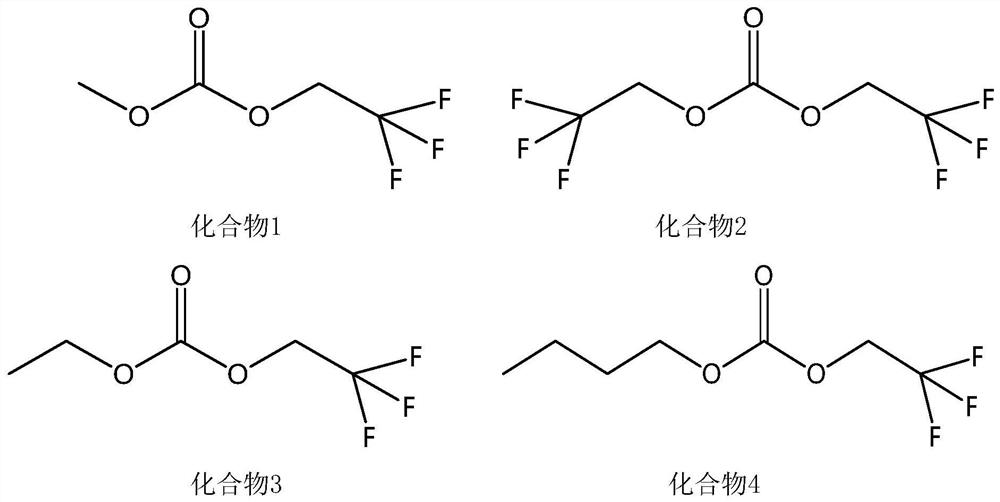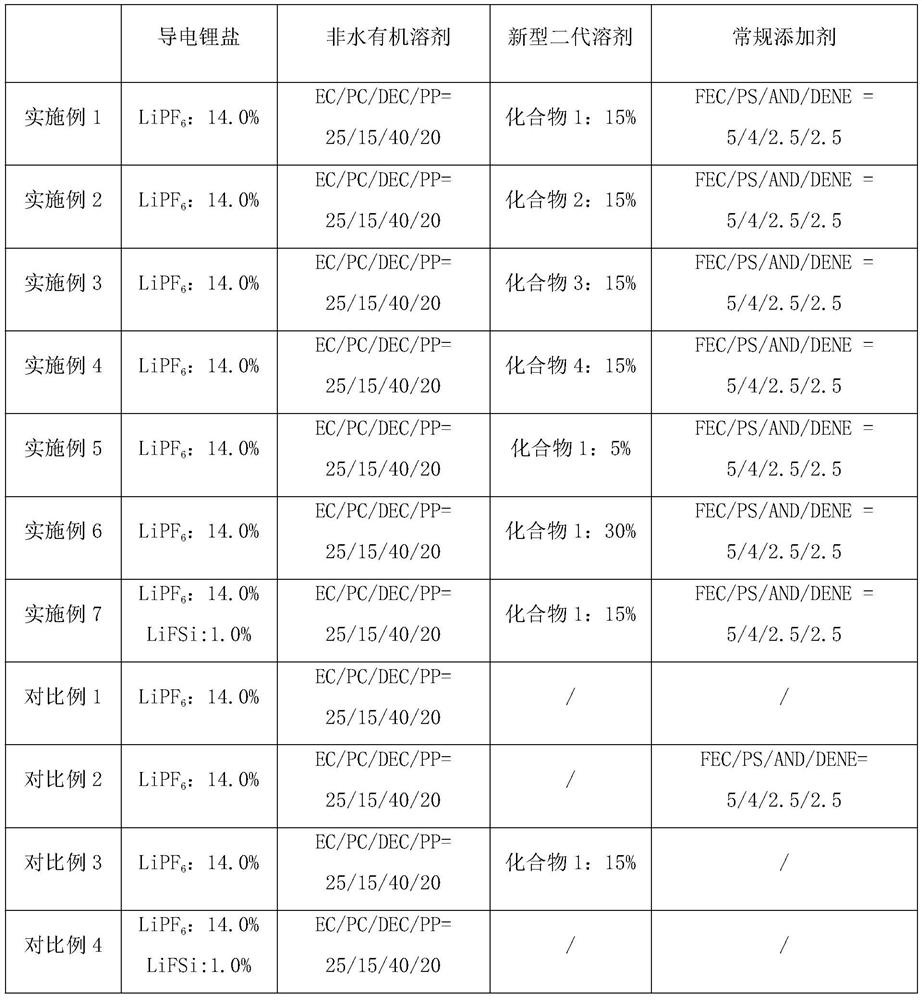A kind of lithium-ion battery non-aqueous electrolyte and lithium-ion battery
A lithium-ion battery and non-aqueous electrolyte technology, applied in the field of lithium-ion batteries, can solve problems that affect battery life and safety performance, low conductivity of lithium-ion battery electrolyte, collapse and damage of positive electrode material structure, etc., and achieve FEC suppression Effects of producing gas, increasing the electrochemical window, and improving kinetic properties
- Summary
- Abstract
- Description
- Claims
- Application Information
AI Technical Summary
Problems solved by technology
Method used
Image
Examples
Embodiment 1
[0035] Electrolyte preparation steps: In a glove box filled with argon, ethylene carbonate, propylene carbonate, diethyl carbonate and ethyl acetate are prepared according to the mass ratio of EC:PC:DEC:PP=25:15:40:20 Mix, then slowly add 14.0wt% lithium hexafluorophosphate to the mixed solution, finally add 5.0wt% fluoroethylene carbonate based on the total weight of the electrolyte, and 4.0wt% 1,3-propane sultone based on the total weight of the electrolyte , 2.5wt% adiponitrile based on the total weight of the electrolyte, 2.5wt% 1,2-bis(2-cyanoethoxy)ethane based on the total weight of the electrolyte, 1.0wt% difluorosulfone based on the total weight of the electrolyte Lithium imide was stirred evenly to obtain the lithium-ion battery electrolyte of Example 1.
[0036] The prepared lithium-ion power battery electrolyte was injected into the fully dried artificial graphite material / LC0-4.4V battery. After the battery was left at 45°C, formed by high-temperature fixtures and...
Embodiment 2-7
[0047] Embodiment 2-7 and comparative example 1-4
[0048] In Examples 2-7 and Comparative Examples 1-4, except that the composition ratio of the components of the electrolyte solution is added as shown in Table 1, the others are the same as in Example 1. The proportioning ratio of the components of the electrolytes of Examples 1-7 and Comparative Examples 1-4 is shown in Table 1, and the physical properties of the electrolytes of Examples 1-7 and Comparative Examples 1-4 are shown in Table 2.
[0049] Table 3 shows the performances of the digital batteries of Examples 1-7 and Comparative Examples 1-4.
[0050] Table 1 Embodiment 1-7 and the composition ratio of each component of the electrolyte of comparative example 1-4
[0051]
[0052] Table 2 embodiment 1-7 and comparative example 1-4 electrolyte physical properties
[0053]
[0054]
[0055] Table 3 Embodiment 1-7 and comparative example 1-4 digital battery performance
[0056]
PUM
 Login to View More
Login to View More Abstract
Description
Claims
Application Information
 Login to View More
Login to View More - R&D
- Intellectual Property
- Life Sciences
- Materials
- Tech Scout
- Unparalleled Data Quality
- Higher Quality Content
- 60% Fewer Hallucinations
Browse by: Latest US Patents, China's latest patents, Technical Efficacy Thesaurus, Application Domain, Technology Topic, Popular Technical Reports.
© 2025 PatSnap. All rights reserved.Legal|Privacy policy|Modern Slavery Act Transparency Statement|Sitemap|About US| Contact US: help@patsnap.com



